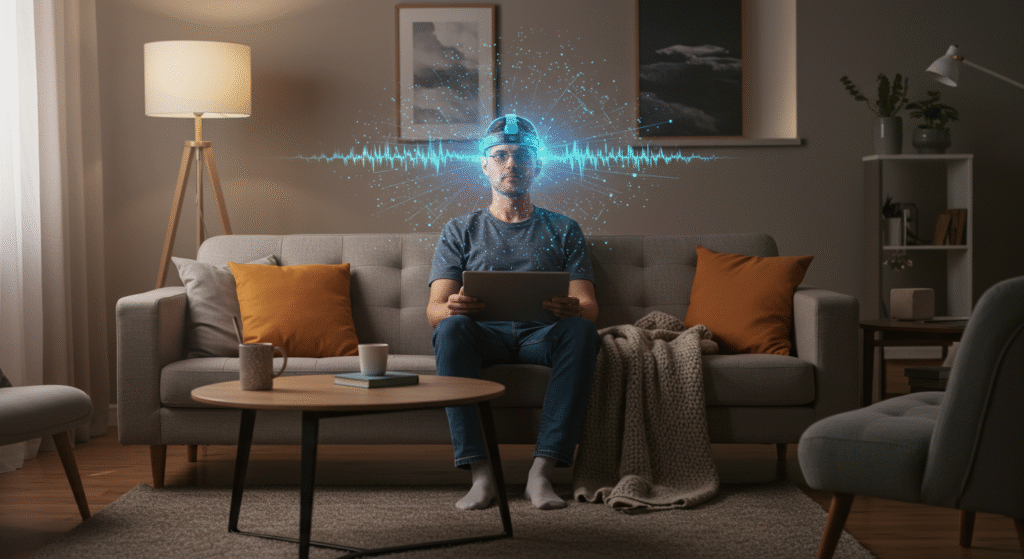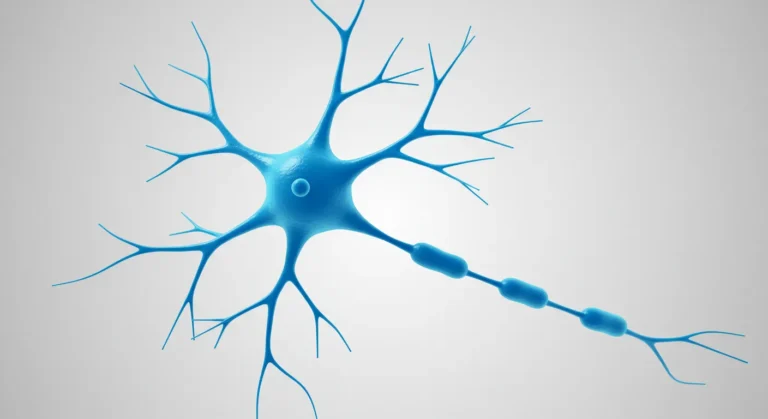Neurofeedback at Home: 7 Game-Changing Ways to Train Your Brain

Picture this: you’re sitting in your living room, wearing what looks like a simple headband, yet you’re literally rewiring your brain for better focus, calmer sleep, and sharper mental performance. Sounds like science fiction? Welcome to the reality of neurofeedback at home.
I remember when my friend Sarah first told me about her home neurofeedback setup. She’d been struggling with anxiety and scattered attention for years, bouncing between expensive therapy sessions and meditation apps that never quite clicked. Then she discovered she could train her own brainwaves from her couch – and everything changed.
Key Takeaways:
- Home neurofeedback devices make brain training accessible and affordable
- You can target specific issues like focus, anxiety, and sleep quality
- Consistency matters more than expensive equipment
- Real-time feedback helps your brain learn optimal patterns
- Results typically show within 2-4 weeks of regular practice
What Exactly Is Neurofeedback?
Think of neurofeedback as a mirror for your brain. Just like you adjust your posture when you see yourself slouching in a mirror, neurofeedback shows your brain its own activity patterns so it can self-correct.
How does neurofeedback work? It’s surprisingly elegant. Sensors placed on your scalp detect electrical activity from your neurons – those tiny brain cells constantly chattering away. This brainwave data gets translated into real-time feedback through sounds, visuals, or gentle vibrations.
Your brain, being the adaptive marvel it is, naturally moves toward the rewarded patterns and away from the less optimal ones. No conscious effort required – your brain does the heavy lifting automatically.
The Science Behind How the Brain Works
How does the brain work in relation to neurofeedback? Your brain operates on different frequency bands, each serving specific functions:
- Delta waves (0.5-4 Hz): Deep sleep and healing
- Theta waves (4-8 Hz): Creativity and deep meditation
- Alpha waves (8-12 Hz): Relaxed focus and calm alertness
- Beta waves (12-30 Hz): Active thinking and problem-solving
- Gamma waves (30+ Hz): Peak cognitive performance
When these frequencies get out of balance – too much anxious beta, not enough focused alpha – you feel scattered, stressed, or mentally foggy.
Types of Home Neurofeedback Systems
Traditional EEG Neurofeedback Devices
These use multiple sensors to read brainwave patterns across different brain regions. Popular options include:
Muse Headband: Perfect for meditation-focused training
- Tracks focus during meditation sessions
- Provides audio feedback (calm weather vs. stormy sounds)
- Great for beginners wanting to build mindfulness habits
NeuroSky: Budget-friendly single-sensor option
- Measures attention and meditation levels
- Works with various apps and games
- Ideal for basic focus training
Microcurrent Neurofeedback
Microcurrent neurofeedback represents a newer approach that’s gaining serious traction. Instead of just reading brainwaves, these devices send tiny electrical signals back to your brain – so subtle you can’t feel them.
The theory? These micro-currents help “unstick” rigid brainwave patterns, allowing your brain to find more flexible, optimal states naturally. It’s like giving your neural networks a gentle nudge toward better balance.
Popular microcurrent devices include the NeurOptimal system and various PEMF (Pulsed Electromagnetic Field) devices designed for home use.
Setting Up Your Home Neurofeedback Practice
Creating the Right Environment
Your setup doesn’t need to be fancy, but consistency helps. I’ve found these elements make a real difference:
Choose a quiet corner where you won’t be interrupted. Sarah transformed a corner of her bedroom with just a comfortable chair and soft lighting.
Establish a routine. Pick the same time daily – many people love morning sessions for mental clarity or evening sessions for better sleep preparation.
Start small. Begin with 10-15 minute sessions rather than ambitious hour-long marathons that burn you out.
What to Expect During Sessions
Most people worry their first session will be complicated or uncomfortable. The reality? It’s remarkably simple:
- Place the sensors according to your device instructions
- Sit comfortably and let the feedback guide you
- Don’t force anything – your brain will naturally respond to the feedback
- Stay consistent for best results
The feedback might be audio tones that become more pleasant when you’re in optimal states, visual displays that brighten with better focus, or gentle vibrations that change with your brainwave patterns.
Targeting Specific Goals
Improving Focus and Attention
For scattered minds craving laser focus, neurofeedback can be incredibly effective. The key is training your brain to produce more sustained alpha waves while reducing excessive theta (daydreamy) or high beta (anxious) activity.
Many users report noticeable improvements in:
- Sustained attention during work tasks
- Reduced mental chatter and racing thoughts
- Better ability to ignore distractions
- Improved working memory
Better Sleep Quality
Sleep-focused neurofeedback typically encourages more delta and theta production while reducing overactive beta waves that keep your mind spinning at bedtime.
The protocol usually involves:
- Evening sessions to prime your brain for rest
- Training programs that enhance natural sleep rhythms
- Reduced caffeine-like mental stimulation before bed
Stress and Anxiety Management
This is where many people see the most dramatic changes. Chronic stress creates stuck patterns of high beta activity – your brain essentially gets trapped in fight-or-flight mode.
Neurofeedback helps by:
- Increasing calming alpha wave production
- Reducing hypervigilant beta patterns
- Improving heart rate variability
- Building resilience to daily stressors
Choosing the Right Device for You
| Device Type | Best For | Price Range | Complexity |
| Muse Headband | Meditation focus | $200-300 | Beginner |
| NeuroSky | Basic attention training | $100-200 | Beginner |
| Emotiv EPOC | Advanced brain training | $800-1200 | Intermediate |
| NeurOptimal (rental) | Comprehensive optimization | $150/month | Professional |
Budget-Friendly Options
You don’t need to break the bank to start brain training. Some effective approaches under $300:
- Muse headband with meditation apps
- NeuroSky paired with focus-training games
- DIY biofeedback using heart rate variability apps
- Audiovisual entrainment devices that use light and sound
Professional-Grade Home Systems
For serious biohackers ready to invest more:
- NeurOptimal rental programs bring professional-grade equipment home
- Emotiv systems offer research-level brain monitoring
- Custom EEG setups for advanced users comfortable with technical complexity
Common Mistakes to Avoid
Expecting instant magic: Real neuroplasticity takes time. Give yourself at least 3-4 weeks of consistent practice before judging results.
Overdoing sessions: More isn’t always better. Your brain needs time to integrate changes between sessions.
Ignoring basics: No device can overcome terrible sleep, chronic stress, or poor nutrition. Use neurofeedback alongside solid foundational habits.
Getting device-obsessed: The specific technology matters less than consistent practice. A simple device used regularly beats an expensive one collecting dust.
Real User Experiences
Mark, a software developer, struggled with afternoon focus crashes. After six weeks of daily 15-minute alpha wave training sessions, he reports sustained concentration through his entire workday.
Lisa used evening theta training to address chronic insomnia. Within a month, she was falling asleep 20 minutes faster and waking up more refreshed.
These aren’t isolated cases – research consistently shows measurable improvements in attention, emotional regulation, and sleep quality with regular neurofeedback practice.
The Future of Home Brain Training
We’re entering an exciting era where sophisticated brain training is becoming as accessible as fitness apps. Emerging technologies include:
- AI-powered personalization that adapts protocols to your unique brain patterns
- Integration with wearables for 24/7 brain state monitoring
- Virtual reality neurofeedback that gamifies the experience
- Advanced microcurrent systems offering deeper neural optimization
Getting Started Today
Ready to begin your home neurofeedback journey? Start with these steps:
- Choose a beginner-friendly device like the Muse headband or NeuroSky
- Commit to 2-3 weeks of daily practice before evaluating
- Track your progress with simple metrics like focus duration or sleep quality
- Join online communities for support and protocol sharing
Remember, you’re not just training your brain – you’re investing in every aspect of your mental performance and well-being.
The best part? Unlike expensive therapy or complicated wellness protocols, neurofeedback at home puts you in the driver’s seat of your own neural optimization. Your brain has incredible capacity for positive change – neurofeedback simply gives it the feedback loop to unlock that potential.
Want more practical wellness tips that actually work? Explore our guides on optimizing your sleep environment and science-backed focus techniques to amplify your neurofeedback results.
Disclaimer: The information provided is for educational purposes only, not a substitute for professional medical advice. Always consult a healthcare professional.







